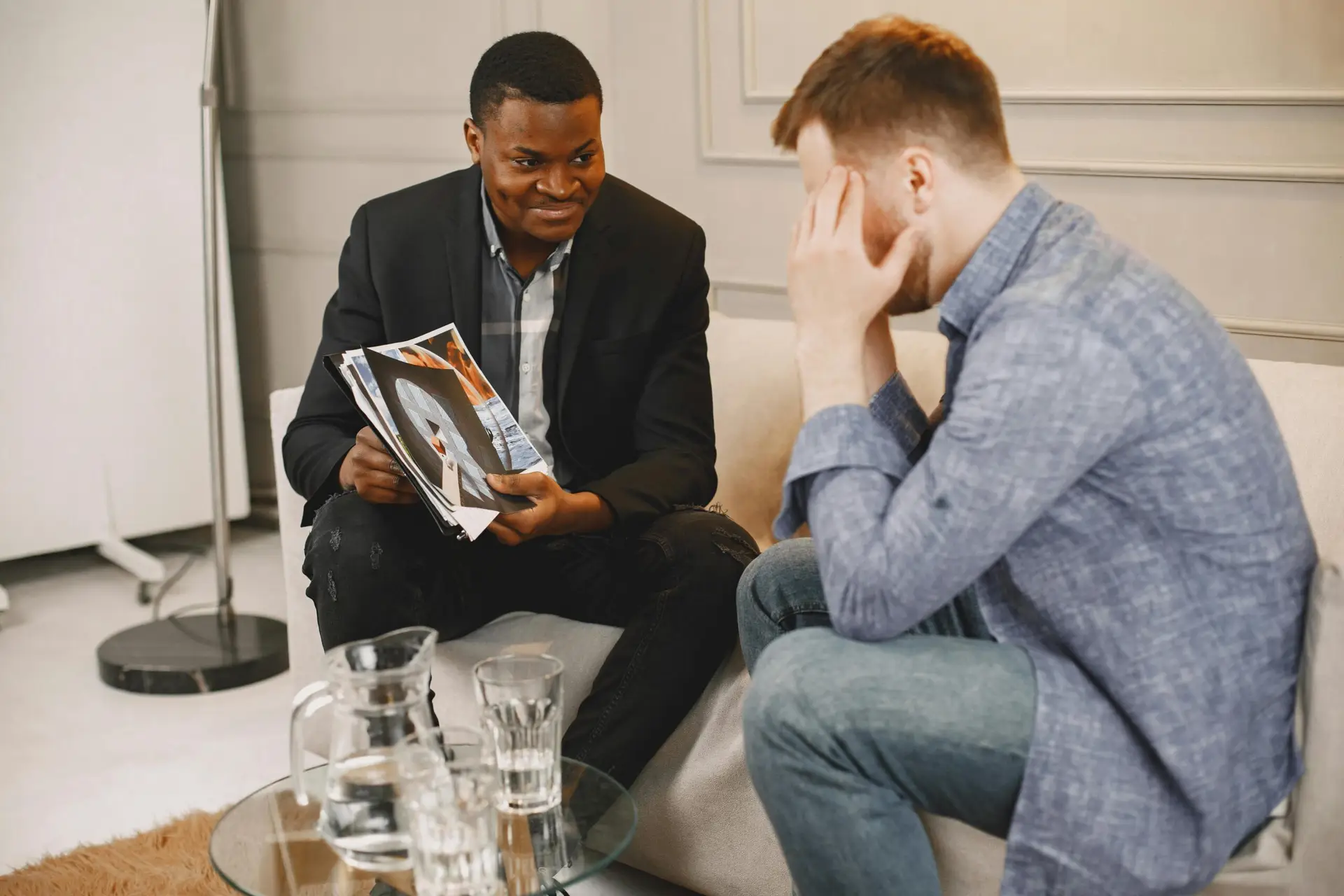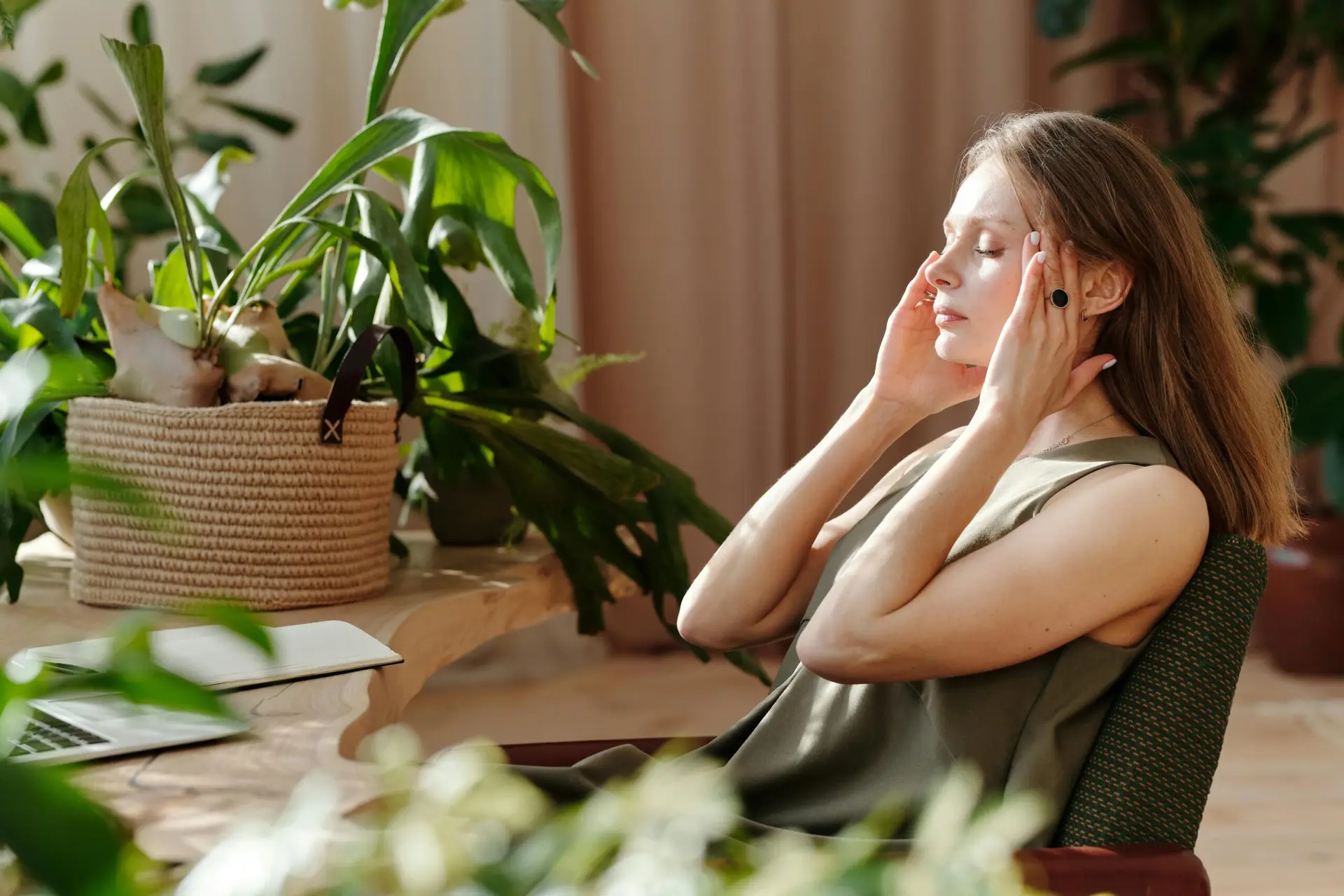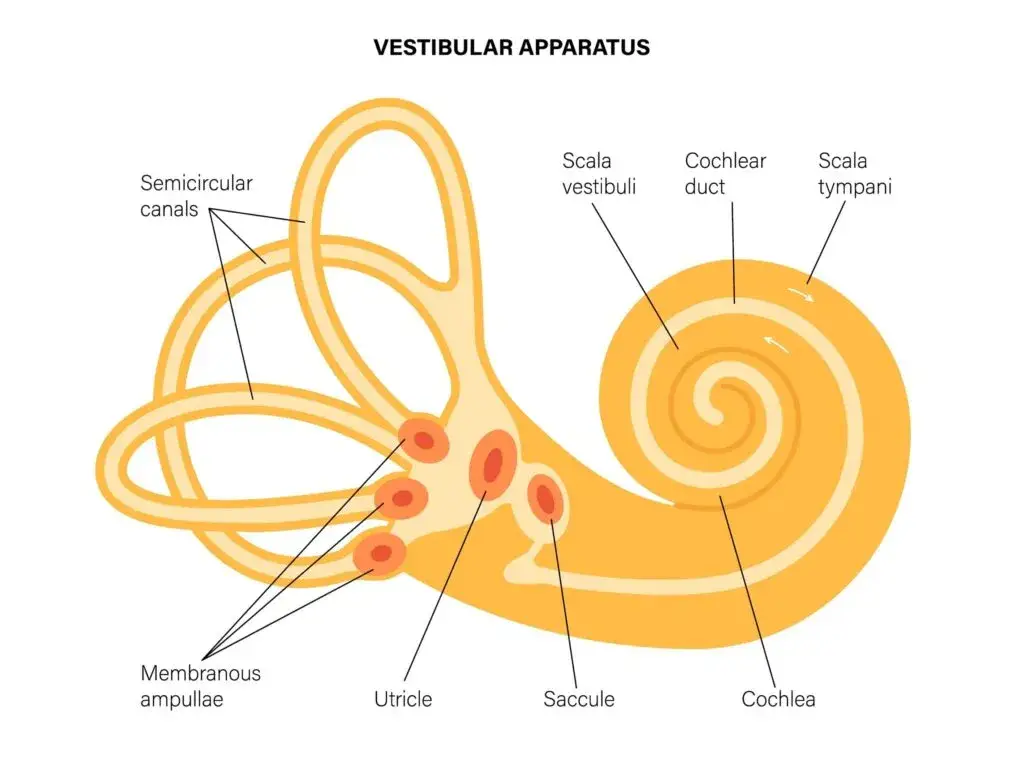
Craniocervical Instability: If you’ve been living with migraines, brain fog, dizziness, vertigo, neck pain, visual disturbances, tinnitus, ear pressure, or a frustrating grab-bag of “mystery” symptoms, you’re not imagining things—and you’re not alone. For many people, the common thread isn’t in the ear, the eyes, or even the sinuses. It lives higher—at the delicate junction between the head and the neck—where tiny misalignments and ligament strain can quietly create big neurologic consequences. This area is known as the craniocervical junction (CCJ). When the head-on-neck relationship becomes unstable, we call it craniocervical instability (CCI).
At Lavender Family Chiropractic in Sarasota, Florida, our focus is the upper cervical spine—the atlas (C1) and axis (C2)—and how precise, gentle corrections here can help restore structural alignment, calm irritated nerves, normalize fluid and blood flow dynamics, and allow the body to regain stability. In our experience, meaningful, lasting stabilization of the craniocervical region is extremely difficult—often impossible—until the upper cervical alignment is corrected. Alignment first; stability follows.
Below, you’ll find a clear, encouraging roadmap: what CCI is, how it shows up in daily life, why symptoms can be so widespread, and how upper cervical chiropractic—backed by advanced 3D imaging and nervous system scans—can support a real path forward. Whether you’re searching “chiropractor Sarasota Florida,” “upper cervical chiropractor near me,” “Vertigo doctor near me,” or “Migraine doctor near me,” this guide is for you.
What Is Craniocervical Instability (CCI)?
The craniocervical junction is the engineering marvel where your skull (occiput/C0) meets the top two neck bones (C1—the atlas—and C2—the axis). Together, they protect your lower brainstem, vertebral arteries, and upper spinal cord while allowing an incredible range of motion. Stability here is provided by:
- Alignment (bony architecture): how the head is positioned on the atlas and axis
- Ligament integrity: especially the transverse, alar, and apical ligaments, plus the tectorial membrane
- Neuromuscular control: the deep suboccipital muscles and reflexes that keep your head level and your eyes steady
CCI occurs when those stabilizers—especially the ligaments—are lax or strained and the head-on-neck relationship can’t hold steady. Even subtle micromotions can irritate the brainstem, stretch pain-sensitive tissues, alter blood/CSF dynamics, and provoke a cascade of autonomic (nervous system) symptoms.
Symptoms of CCI: Why It Can Feel “Systemic”
CCI can mimic or amplify many conditions because the brainstem and upper cervical nerves influence nearly every body system. Common symptom categories include:
Head and Face
- Migraines and chronic headaches (occipital, retro-orbital, or hemicranial)
- Facial pain or pressure, jaw pain/TMJ aggravation
- Ear fullness/pressure, tinnitus, sound sensitivity
Balance and Vision
- Dizziness, vertigo, unsteadiness on feet
- “Boat rocking,” motion sensitivity, difficulty in busy visual environments (grocery stores, scrolling screens)
- Visual disturbances—blur, ghosting, light sensitivity, difficulty tracking
Cognitive and Autonomic
- Brain fog, slowed processing, memory lapses
- Anxiety surges not tied to mental triggers (autonomic swings)
- Palpitations, POTS-like symptoms, temperature dysregulation, excessive sweating or feeling chilled
- Sleep disruption, fatigue, “adrenaline dumps”
Neck and Neuromuscular
- Neck pain, stiffness, or a “heavy head” feeling
- Shoulder blade or trapezius tension that never quite releases
- Numbness/tingling in hands/arms, especially with certain head positions
Ears, Nose, Throat
- Eustachian tube dysfunction, barometric pressure sensitivity, “storm headaches”
- Vague sinus pressure that doesn’t resolve with traditional treatments
Gastrointestinal and Other
- Nausea unrelated to food, motion-triggered queasiness
- Vagal tone issues affecting motility or appetite
- Flare-ups with dehydration, poor sleep, or long-screen/posture days
Not everyone has all of these, and intensity can fluctuate. But if you see yourself in multiple categories—especially when symptoms worsen with certain head positions, car rides, screen time, or after minor bumps—CCI deserves thoughtful evaluation.
Why Alignment Comes Before Stability
Stability is a three-legged stool: bones (alignment), ligaments, and neuromuscular control. If the head isn’t sitting properly on C1 and C2, the muscles and ligaments are forced into constant compensation. That creates a vicious cycle:
- Misalignment increases mechanical stress on the ligaments and joint capsules.
- Ligament tension or micro-laxity makes proprioception (joint-position sense) unreliable.
- The deep stabilizers overwork, fatigue, and spasm; superficial muscles tighten to “guard.”
- Abnormal mechanics irritate the brainstem and upper cervical nerves, further disturbing balance, vision, and autonomic tone.
In this state, asking the body to “stabilize” with exercises alone is like trying to level a house on a tilted foundation. In our clinical experience, the body cannot reliably retrain stability until the upper cervical region is precisely aligned. Once the foundation is corrected, ligament stress lessens, neuromuscular control improves, and tissues finally get a chance to recover.
How CCI Disrupts Neurology, Blood Flow, and CSF
The atlas and axis cradle the lower brainstem, an area that coordinates autonomics—heart rate, blood pressure, breathing rhythms, vestibular integration (balance), and more. Misalignment may contribute to:
- Neurovascular irritation: Small positional changes can influence vertebral artery dynamics, venous outflow, and the soft tissues around the foramen magnum.
- CSF circulation: Subtle biomechanical restrictions can change cerebrospinal fluid flow patterns, potentially amplifying head pressure, brain fog, or motion sensitivity.
- Vestibular conflict: If joint receptors in the upper neck send “tilted” data while the eyes and inner ears say “straight,” the brain receives conflicting inputs—fueling dizziness or vertigo.
This “data conflict” explains why many with CCI develop visual motion sensitivity, PPPD-type symptoms, or vestibular migraine flares—especially in environments with moving patterns (traffic, crowds, screens).
What Contributes to CCI?
- Trauma: Whiplash, sports impacts, falls, or even “minor” bumps that never felt right afterward
- Hypermobility/Connective Tissue Variants: People with more elastic ligaments may be prone to micro-instability
- Postural stressors: Prolonged forward-head posture, bruxism, screen time, and repetitive rotational loads
- Inflammatory flares or deconditioning: Illness or prolonged inactivity can reduce muscular support
- Dental, airway, or bite changes: Altered jaw mechanics can feed tension into the upper neck
- Hormonal shifts or rapid growth phases: The stabilizing system lags or changes under new demands
Often, CCI is multi-factorial—part structure, part lifestyle—requiring a precision structural strategy paired with practical, sustainable habit changes.
Conventional Paths vs. Upper Cervical Care (They Can Complement Each Other)
Conventional options may include rest, collars (short-term), targeted physical therapy, proprioceptive/vestibular rehab, injections (e.g., PRP/prolotherapy to support ligaments), or—rarely—surgical fusion. These tools can help certain patients, especially when carefully selected.
Upper cervical chiropractic doesn’t replace medical care. Instead, it focuses on the keystone alignment at C0-C1-C2. We work gently (no popping, twisting, or cracking) to restore that alignment, reduce abnormal mechanical stress, calm the nervous system, and set the stage for other therapies to “stick.” When the atlas is truly centered and balanced, patients often report that physical therapy, vestibular rehab, and at-home stabilization finally begin to hold.
The Lavender Family Chiropractic Difference (Sarasota, Florida)
At Lavender Family Chiropractic—serving Sarasota, Lakewood Ranch, Bradenton, Parrish, Ellenton, Venice, Osprey, Punta Gorda, St. Petersburg, Siesta Key, Longboat Key, Lido Key, and Myakka City—we combine warm, personal care with advanced diagnostics:
3D CBCT Imaging
We utilize state-of-the-art 3D CBCT to visualize the craniocervical junction in extraordinary detail. CBCT shows the bony architecture and subtle misalignments that standard two-dimensional films can miss. By understanding the exact orientation of your atlas and axis, we can craft a correction vector that’s unique to you.
Functional Nervous System Scans (Tytron Paraspinal Infrared Thermography)
Our Tytron scans measure thermal patterns along the spine that may reflect autonomic nerve irritation. It’s a gentle, non-invasive way to track how your nervous system responds as alignment is restored.
Gentle, Precise Adjustments—No Popping or Twisting
Upper cervical corrections are low-force and highly targeted. Most patients are surprised by how comfortable the process is. After a correction, you’ll rest in a zero-gravity-style setting to let the tissues adapt, and then we re-evaluate to confirm that your alignment improved.
Stability Plan, Not a Quick Fix
Our care plans focus on three phases:
- Align: Correct the head-on-neck relationship.
- Stabilize: Support the ligaments and deep stabilizers as they relearn healthy mechanics.
- Resilience: Reduce flare triggers, build capacity, and keep alignment without constant “chasing.”
Life After Alignment: What Patients Commonly Notice
While everyone’s journey is unique, patients frequently report:
- Fewer and less intense migraines
- Improved clarity (less brain fog), better stress tolerance
- Less dizziness/vertigo, steadier walking, easier driving
- Reduced neck tension, fewer “pinch” episodes
- Fewer sensory sensitivities (noise, lights, busy visuals)
- Better sleep and energy “ceiling” for daily tasks
These changes often come in waves—two steps forward, one step back—as the nervous system recalibrates. That’s normal. The key is holding the correction long enough for the ligaments and neuromuscular system to adopt the new baseline.
Practical Stabilization Habits to Support Your Correction
These are general, non-prescriptive ideas that many CCI patients find helpful (always listen to your body and discuss with your providers):
- Neck-neutral sleep: A supportive pillow that keeps the head level; avoid extreme side-bending.
- Micro-breaks for screens: Reset posture, gently nod “yes/no” within comfort, look far away for 20 seconds.
- Gentle breathing work: Slow nasal breathing to calm autonomics and downshift neck muscle guarding.
- Hydration & salt (as appropriate): Especially if you experience POTS-type symptoms (ask your doctor).
- Graded movement: Move often within your tolerance; gradual is better than heroic “catch-up” days.
- Avoid “end-range” loads early: Don’t park your head at extremes; frequent tiny resets are gold.
- Eyes-neck harmony: Practice smooth pursuit and gaze stabilization exercises recommended by your providers—but do them on a truly aligned foundation so they hold.
Who’s a Good Candidate for Upper Cervical Care?
- You identify with multiple CCI symptoms and they’re worse with certain head positions.
- You’ve tried “everything,” including vestibular therapy or PT, and improvements don’t last.
- You prefer gentle, precise care with objective imaging and neurologic tracking.
- You want your plan to coordinate with other providers (ENT, neuro, PT, pain management) as needed.
Co-Management & Red Flags: If you have progressive neurologic deficits, severe trauma, infection signs, or concerning imaging findings, we coordinate with your medical team. Upper cervical care pairs well with thoughtful medical evaluation.
Real-World Stories (Composite Examples)
Migraine + Motion Sensitivity: A Lakewood Ranch professional with weekly migraines and “grocery store vertigo.” CBCT revealed a subtle atlas rotation with head tilt. After a series of gentle corrections and hold checks with Tytron, migraines reduced to monthly, then rare; she finished vestibular homework without relapses.
Brain Fog + POTS-Like Flares: A Sarasota dad with brain fog, palpitations, and heat intolerance post-minor car bump. Aligning C1/C2 lowered his baseline tension; pacing and hydration finally made sense. Within months, he tolerated long workdays without crashes.
Vertigo + Ear Pressure: A Bradenton teacher with storm-triggered headaches and ear fullness. After correction, the pressure episodes dwindled, and she drove confidently again—even in summer storms.
These are not guarantees, but they’re emblematic of what can happen when alignment becomes the new normal.
Frequently Asked Questions: CCI and Upper Cervical Care (Top 15)
1) What exactly is CCI?
CCI is reduced stability at the head-on-neck junction (C0-C1-C2) due to ligament strain, altered alignment, and impaired neuromuscular control. It can irritate the brainstem and upper cervical nerves, producing widespread symptoms.
2) How is CCI diagnosed?
Diagnosis is clinical plus imaging. Different providers may use upright MRI, flexion/extension studies, or digital motion X-ray. In our office we focus on 3D CBCT to map alignment precisely, combined with neurologic assessments that track functional change.
3) Can upper cervical chiropractic “fix” ligaments?
Ligaments heal slowly. Our role is to unload them by centering the head on C1/C2, so tissues can calm and retrain. When alignment is corrected, stability training and daily life changes tend to “stick” better.
4) Will I feel a crack or twist?
No. We employ gentle, precise corrections with no popping or twisting. Most patients find the process surprisingly relaxing.
5) Can this help migraines and vestibular symptoms?
Many patients report fewer, milder migraines and steadier balance after upper cervical correction. Results vary, but restoring the head-neck foundation often improves how the brain integrates vestibular and visual input.
6) What about brain fog and fatigue?
When the brainstem is less irritated and CSF/blood dynamics normalize, people often experience clearer thinking and better energy pacing.
7) Do I still need physical therapy or vestibular rehab?
Often yes—and it usually works better on a corrected foundation. Alignment first, then retraining for durable results.
8) How long until I notice change?
Some feel lighter right away; others progress over weeks to months as their correction holds and nervous system patterns reset. We measure along the way with Tytron and post-correction checks.
9) How often are visits?
Early on, we may see you more frequently to establish and hold alignment, then taper as stability improves. Our goal is durability, not dependence.
10) Do you treat kids or older adults?
Yes—our methods are gentle enough for children and appropriate for seniors, modified to their needs.
11) Is this safe?
Upper cervical care uses controlled, low-force vectors guided by imaging. We assess carefully and co-manage when appropriate.
12) What if I have hypermobility or EDS?
We frequently work with hypermobile patients. Precise alignment can reduce mechanical strain so your stabilization efforts are better tolerated. Plans are individualized.
13) What if I’ve already had injections or surgery?
We can often still help, focusing on alignment and neurologic function while respecting your medical history. Co-management is key.
14) How do you know if the correction “held”?
We re-scan neurologic patterns (Tytron), reassess posture, and—crucially—re-image when clinically indicated. Your symptom trends and function also guide us.
15) Do you take insurance?
Our office is out of network with insurance. Many of our patients receive a superbill to submit to their insurance for reimbursement based on their coverage. We offer many different payment options as well as finance options.
Why CCI Symptoms Flare with Weather, Screens, or Stress
- Barometric pressure shifts can amplify head/ear pressure when venous/CSF outflow is already strained.
- Screens demand precise eye-neck coordination; if atlas alignment is off, visual-vestibular conflict spikes.
- Stress elevates sympathetic tone, tightening suboccipital muscles and making instability more symptomatic.
When alignment is restored and held, these triggers usually become less potent. Many patients say storms still happen—but they’re not wrecked by them anymore.
Your First Visit at Lavender Family Chiropractic
- Consult & Examination: We listen to your story—really listen—then perform a detailed neurologic and structural exam.
- 3D CBCT Imaging: If appropriate, we take CBCT scans to map your unique atlas/axis orientation.
- Precision Plan: We design a custom correction vector and review expectations.
- Gentle Correction & Rest: After the correction, you’ll rest so tissues can adapt.
- Objective Re-Check: We evaluate changes and outline your next steps in the Align → Stabilize → Resilience progression.
What “Success” Looks Like Over Time
- Weeks 1–4 (Align): Relief waves, fewer “bad days,” better head-on-neck feel
- Weeks 4–12 (Stabilize): Longer holds, less guarding, rehab/home habits “stick”
- Months 3–9 (Resilience): Capacity expands, triggers lose leverage, you live more and “manage” less
Remember: healing is non-linear. Fluctuations are normal, especially when life throws curveballs. We walk with you.
Serving Sarasota and Surrounding Areas
We proudly serve Sarasota, Lakewood Ranch, Bradenton, Parrish, Ellenton, Venice, Osprey, Punta Gorda, St. Petersburg, Siesta Key, Longboat Key, Lido Key, and Myakka City. If you’ve been searching “chiropractor near me” or “upper cervical chiropractor near me” and you’re ready for a precise, gentle approach that respects the complexity of CCI, we’d be honored to help.
Take the First Step Toward Stability
If CCI has been running the show—dictating your plans, hijacking your energy, and dimming your confidence—please know there’s a path forward. With 3D CBCT imaging, functional nervous system scans, and gentle, precise upper cervical corrections, our team at Lavender Family Chiropractic helps people across Southwest Florida put alignment first so stability can follow.
Lavender Family Chiropractic in Sarasota Florida offers complimentary consultations to learn more about you. Click the link below!
https://intake.chirohd.com/new-patient-scheduling/724/lavender-family-chiropractic
Visit our Website!
To learn more about us go to http://www.chiropractorsarasotaflorida.com
We also service Bradenton, Parrish, Ellenton, Ruskin, Venice, Tampa, St. Pete, Osprey, Longboat, Lakewood Ranch, Myakka City.
If you are in Tampa, Fort Myers, or Salt Lake City, you can visit my other locations! NeckWise Upper Cervical. Visit, www.neckwise.com
If you are not local, visit www.uccnearme.com to find a doctor in your area.
Serving Sarasota, Bradenton, Lakewood Ranch, Parrish, Ellenton, Venice, Osprey, Punta Gorda, St. Petersburg, Siesta Key, Longboat Key, Lido Key, Myakka City and beyond.
Website: www.chiropractorsarasotaflorida.com
Call/Text: (941) 243-3729
Address: 5899 Whitfield Ave Ste 107, Sarasota, FL 34243
Instagram: @lavenderfamilysrq · TikTok: @drrustylavender
Your life is bigger than your symptoms. Let’s rebuild a steady foundation—so you can stand, move, think, and live with clarity again.





